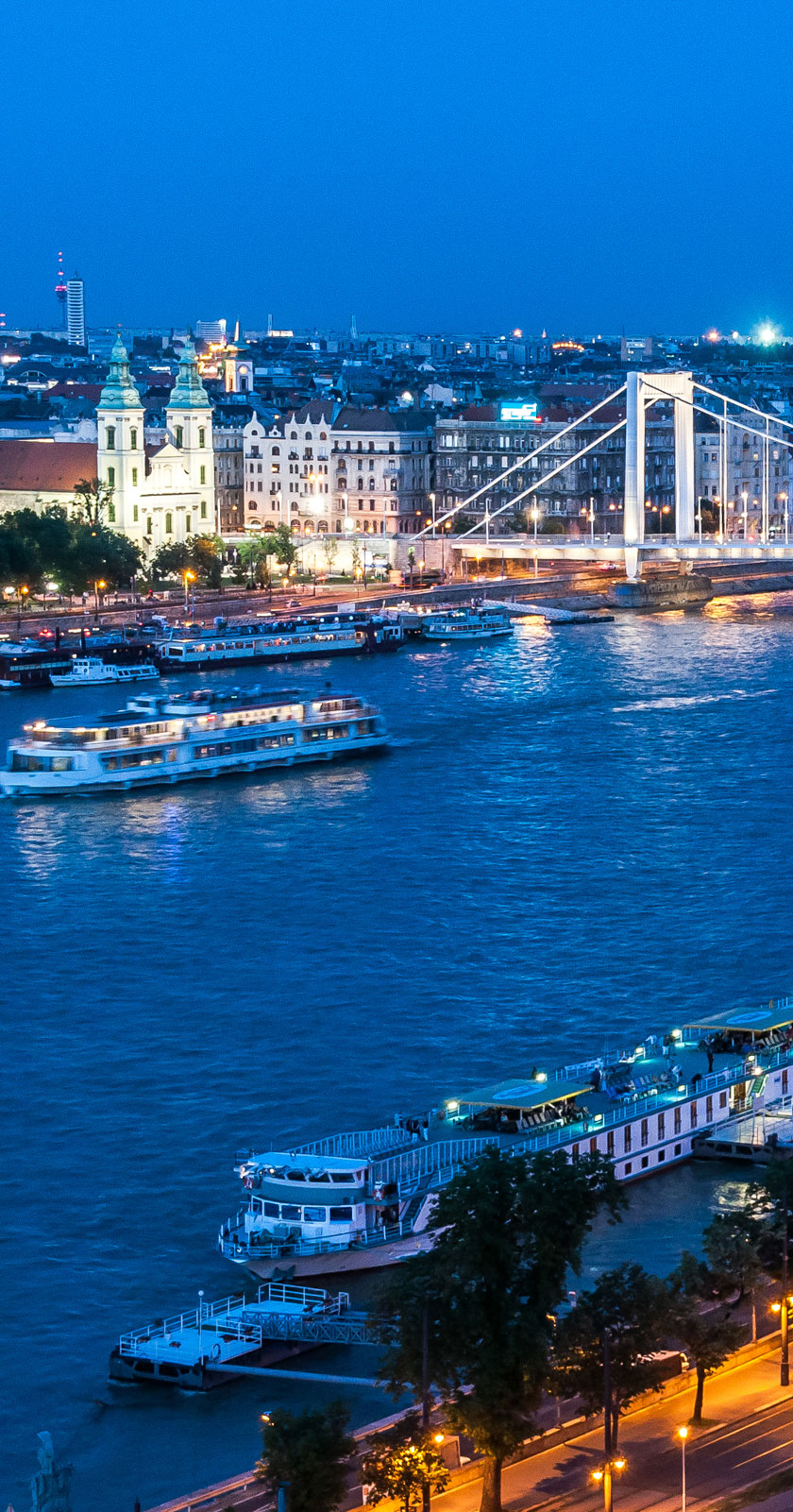Next to it stands the most beautiful gothic temple of Hungary. Officially called as the Church of Our Lady (Hungary’s patron saint is the Virgin Mary), more commonly referred to as the Matthias Church (popularly named after the greatest Hungarian king, Matthias Corvinus). However, rulers considerably redesigned and built it over the centuries, adding new parts and destroying others. It served as a crowning church three times, and several royal weddings took place in it. Its magnificent features are evident inside and out. The most breathtaking part from the outside is undeniably the 80-meter (260 ft.) high stone-laced Gothic tower, while visitors entering the church are instantly impressed by the wide hall area and the arches of the side aisles.
Fishermen’s Bastion
The Bastion is situated on the Castle Hill in Budapest. It’s overlooking the Buda bank of the Danube, is a terrace designed in the neo-Gothic and neo-Romanesque style. This popular spot in the Castle District, known as the Fisherman’s Bastion. Moreover, it’s located above Watertown (Víziváros) and adjacent to Matthias Church. Built between 1895 and 1902 according to the plans of Frigyes Schulek, it offers visitors a magnificent panorama of almost the entire city. Despite its name, the bastion was never a site of actual battles. It is named after the fishermen who once defended this section of the city walls, although no fighting ever took place on the bastion itself.
In 1987 the UNESCO included the whole Castle District and the Danube embankment to their World Cultural Heritage Program as they incorporate many historic and cultural sights that depict important periods from the story of the whole area.
Pest Side
Parliament
This eclectic neo-Gothic building is the permanent site of the national assembly, sitting on the right side of the Danube, giving a nice counterweight to the Buda Castle on the left. At the time of its construction, between 1885 and 1902, it was the largest parliamentary building in the world. However, the unique interior includes huge halls with 691 rooms, all in neo-gothic design, with a touch of Byzantine influence. In fact, the decorations needed about 40 kg of 22-23 karat gold!
Andrássy Avenue
Budapest’s most beautiful avenue is also part of the World Heritage. Lined by eclectic Neo-renaissance palaces and houses featuring fine facades, staircases and interiors, it is pure pleasure walking along this iconic street for the sight of architectural masterpieces. Below the surface runs the first underground of continental Europe. Moreover, the proposal for the Millennium Underground was put forth in 1870, and it commenced its operations in 1896.
Heroes’ Square
Lying at the end of the Andrássy Avenue, Heroes’ Square (or Hősök tere in Hungarian) is surrounded by two beautiful buildings. The eclectic-neoclassical Museum of Fine Arts and the Hall of Art. The Millennium Memorial dominates Budapest’s most beautiful square. It’s a monument portraying the outstanding figures of the 1100 years since Settlement of the Magyars in Hungary in the 9th century.
Opera House
The building of the Hungarian State Opera House is a splendid example of neo-Renaissance architecture. It has the elements of the Baroque grandeur.
Szent István Basilica
The heart of the city of Pest houses the second most important church in Hungary. József Hild, Miklós Ybl, and József Kauser collaborated over a span of 50 years, from 1851 to 1905, to build it in a neo-Renaissance-Classicist style, following a Greek cross plan. The church showcases the artistic talents of renowned Hungarian painters and sculptors from the 19th century, including Bertalan Székely, Gyula Benczúr, Alajos Stróbl, János Fadrusz, and Pál Pátzay. Within the Chapel of the “Holy Right Hand,” visitors can find the mummified right hand of Hungary’s first canonized Christian King. Moreover, the south tower offers an extraordinary view of the city.
Dohány Street Great Synagogue
Europe’s biggest synagogue is located in the heart of Pest. The Dohány Street Synagogue complex consists of the Great Synagogue, the Jewish Museum, the Heroes’ Temple, the graveyard and the Holocaust memorial.
Chain Bridge
The Széchenyi Lánchíd (Chain Bridge) is Budapest’s oldest and most known permanent bridge over the Danube. Count István Széchenyi initiated the construction of the structure in 1839, while Adam Clark was responsible for its design. Also, the magnificent construction is about 375 meter (1230ft) long and 16 meter wide. Beautifully carved stone lions adorn the base of the bridge, adding to its ornamental charm.
Festooned with white lights the Chain Bridge at night is one of the most beautiful sights of the city.






